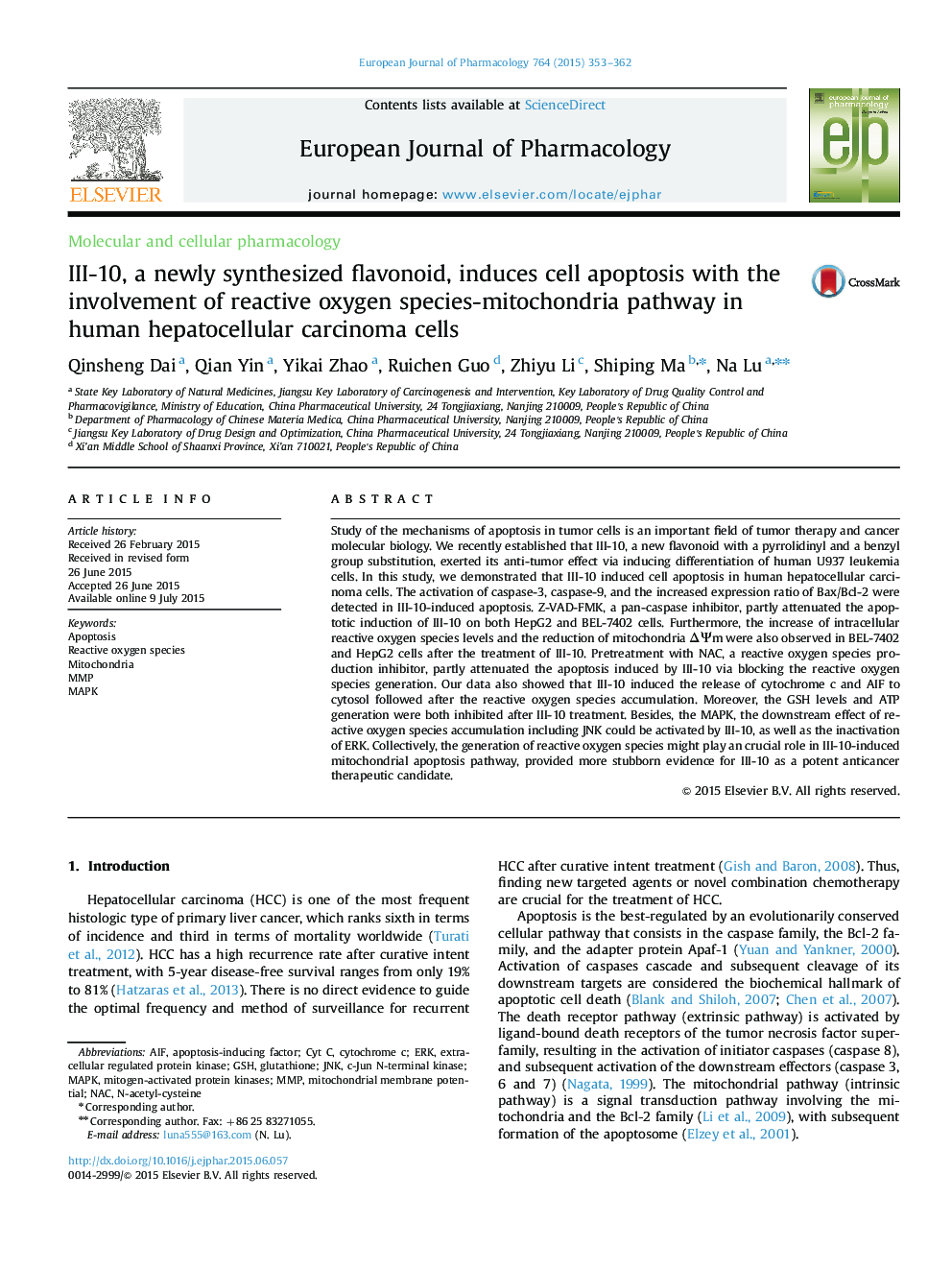| Article ID | Journal | Published Year | Pages | File Type |
|---|---|---|---|---|
| 2531328 | European Journal of Pharmacology | 2015 | 10 Pages |
Study of the mechanisms of apoptosis in tumor cells is an important field of tumor therapy and cancer molecular biology. We recently established that III-10, a new flavonoid with a pyrrolidinyl and a benzyl group substitution, exerted its anti-tumor effect via inducing differentiation of human U937 leukemia cells. In this study, we demonstrated that III-10 induced cell apoptosis in human hepatocellular carcinoma cells. The activation of caspase-3, caspase-9, and the increased expression ratio of Bax/Bcl-2 were detected in III-10-induced apoptosis. Z-VAD-FMK, a pan-caspase inhibitor, partly attenuated the apoptotic induction of III-10 on both HepG2 and BEL-7402 cells. Furthermore, the increase of intracellular reactive oxygen species levels and the reduction of mitochondria ΔΨm were also observed in BEL-7402 and HepG2 cells after the treatment of III-10. Pretreatment with NAC, a reactive oxygen species production inhibitor, partly attenuated the apoptosis induced by III-10 via blocking the reactive oxygen species generation. Our data also showed that III-10 induced the release of cytochrome c and AIF to cytosol followed after the reactive oxygen species accumulation. Moreover, the GSH levels and ATP generation were both inhibited after III-10 treatment. Besides, the MAPK, the downstream effect of reactive oxygen species accumulation including JNK could be activated by III-10, as well as the inactivation of ERK. Collectively, the generation of reactive oxygen species might play an crucial role in III-10-induced mitochondrial apoptosis pathway, provided more stubborn evidence for III-10 as a potent anticancer therapeutic candidate.
